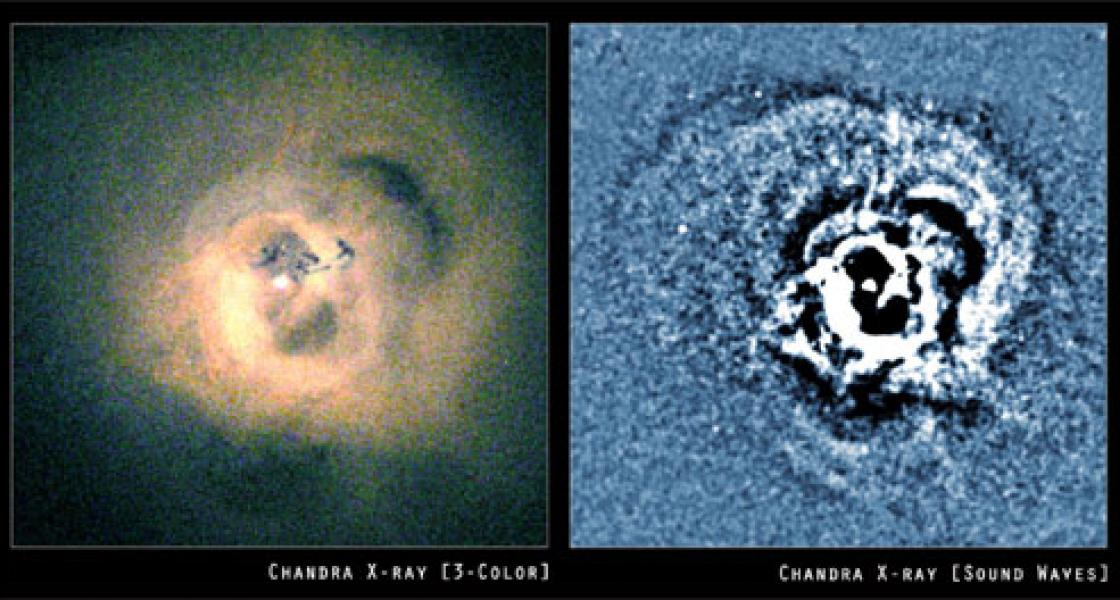Galaxy clusters contain enormous clouds of gas whose cooling should result in the formation of a multitude of new stars. But that's not what NASA's Chandra X-ray Observatory is detecting. Instead there's a whole lot less gas cooling and new star formation than scientists had predicted. Perhaps the most mysterious discovery of all is that the clusters are humming – a low B-flat 57 octaves below middle C. The hum originates from ripples of sound waves washing through great galactic gas clouds surrounding supermassive black holes.
The two images at right are the first evidence of this cosmic sound. The first (left) is a Chandra X-ray image of the center of the Perseus galaxy cluster. The second (right) is the same picture after image processing to enhance the concentric sound waves.
Senior Research Associate Mateusz Ruszkowski (a member of Fellow Mitch Begelman's group) has created a simulation that accurately models what's happening in clusters of galaxies like Perseus that are literally bubbling with sound waves. In the process, Ruszkowski has confirmed not only exactly how the sound waves are created, but also how they heat up the clusters' gas clouds, preventing them from cooling and forming new stars. The same process that causes the clusters' gas clouds to stay hot also limits the size of supermassive black holes. Simply put, bubbling sound waves are nature's way of keeping galaxies (and clusters) from getting too big.
Cluster heating starts when a supermassive black hole gets really big – around three billion times more massive than the Sun. It starts spewing out two relativistic jets oriented at 180° to each other. The jets plow through narrow lanes of gas, heating them. Then, when the buoyant jets approach the edge of the gas cloud, they explode into a mushroom cloud, spewing their energy out laterally. The explosion produces sound waves, which surround the mushroom cloud and move away in all directions, affecting all regions of the galaxy cluster. As the sound waves die out, they produce enough heat to counter the normal cooling that occurs. The emergence of the jets also stops the growth of the supermassive black hole.
A report describing this work appeared in the November 20, 2005, issue of The Astrophysical Journal. It is the most recent in a series dating back to 2003. - Julie Phillips




